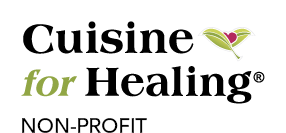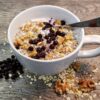Juicing is the method of squeezing fruits or vegetables between two metal plates to extract the juice. Modern juice extractors may chop or grind the produce before applying pressure to separate the juice from the pulp.
The CDC states that less than one-third of Americans consume the recommended nine servings a day of fruits and vegetables. Consuming juices in addition to meals could increase your overall intake of fruits and vegetables. Plus, consuming juices may increase the variety of fruits and vegetables in your diet, providing your body with different vitamins and minerals.
Juicing is often viewed as a method of “detoxing”. “Detoxing” is generally a diet low in calories which can result in weight loss. Research has not confirmed the safety of juicing used as a detoxifying diet. However, our bodies do naturally have a detoxifying system, the kidneys, and the liver. The liver and kidneys expel toxins and cleanse the body constantly.
Here are some advantages of juicing:
- No added sugar or artificial sweeteners
- A wide array of nutrients
- Adding to total daily servings of fruits and vegetables
- Refreshing and healthy drink choice
Here are some disadvantages of juicing:
- Less fiber than whole fruits or vegetables
- Decreased vitamin, mineral and antioxidant content after juiced
- Evidence that drinking may not be as satisfying as eating
- Juices contain little to no protein
Overall, juicing can be a beneficial way to increase your intake of fruits and vegetables. However, it should not replace whole fruits and vegetables in your diet.
Resource: Harvard Health Publishing, Beverly Merz (2016, July 29th) Are Fresh Juices as Healthy as they Seem? Retrieved from: https://www.health.harvard.edu/healthy-eating/juicing-fad-or-fab










